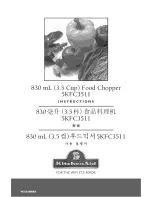SYNCHRONOUS SERIAL INTERFACE (SSI)
MOTOROLA
PORT C
6 - 109
6.4.6
SSI Exceptions
The SSI can generate four different exceptions (see Figure 6-53 and Figure 6-54):
1. SSI Receive Data – occurs when the receive interrupt is enabled, the receive
data register is full, and no receive error conditions exist. Reading RX clears
the pending interrupt. This error-free interrupt can use a fast interrupt service
routine for minimum overhead.
2. SSI Receive Data with Exception Status – occurs when the receive interrupt is
enabled, the receive data register is full, and a receiver overrun error has
occurred. ROE is cleared by first reading the SSISR and then reading RX.
3. SSI Transmit Data – occurs when the transmit interrupt is enabled, the trans-
mit data register is empty, and no transmitter error conditions exist. Writing to
TX or the TSR will clear this interrupt. This error-free interrupt may use a fast
interrupt service routine for minimum overhead.
4. SSI Transmit Data with Exception Status – occurs when the transmit interrupt
is enabled, the transmit data register is empty, and a transmitter underrun
error has occurred. TUE is cleared by first reading the SSISR and then writing
to TX or the TSR to clear the pending interrupt.
F
re
e
sc
a
le
S
e
m
ic
o
n
d
u
c
to
r,
I
Freescale Semiconductor, Inc.
For More Information On This Product,
Go to: www.freescale.com
n
c
.
..


















